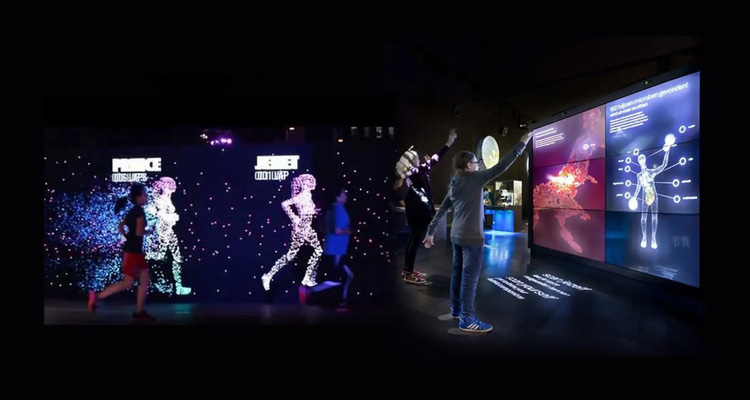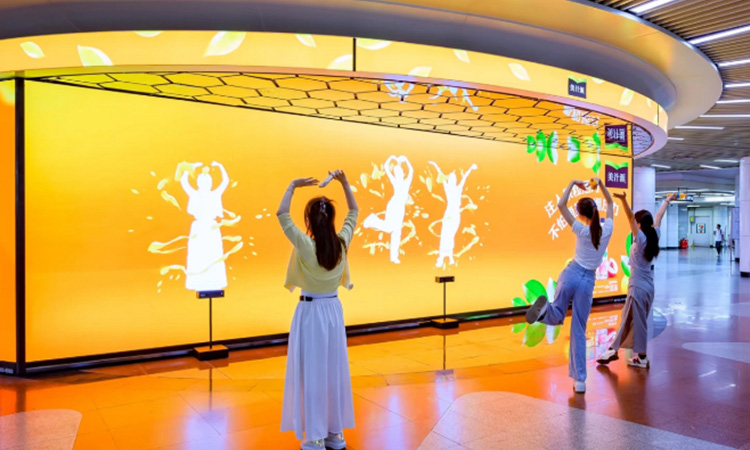What Are the Ways to Implement Touch Interaction on LED displays?
What Are the Ways to Implement Touch Interaction on LED displays?
In order for an LED display to have touch interaction, a suitable approach must be chosen according to the nature of the screen itself.

Let us discuss infrared touch. This is probably the most common technology implemented in LED screens nowadays, especially for those large-sized screens, such as those large screens in conference halls and interactive screens in exhibition halls. They are almost always equipped with it. The principle is quite straightforward. Along the edges of the screen, place a border of infrared-emitting tubes and receiving tubes. The tubes will form a crosshatch pattern of light. When you put your finger or something on the screen, you will definitely block some of the light. The receiving tube will detect where the light is blocked and calculate the touch position. The advantage of this method is obvious. No matter how big the screen is, even a be handled be handled screen of some hundred inches can be handled. Moreover, there are no limitations on the screen surface, whether it is glass, acrylic, or even a material with an arc shape; it can be used. It will not affect the display effect of the LED screen itself. The cost is also low. After all, the hardware is just some infrared tubes and control chips. With more applications, the cost can be further reduced. Of course, there are a couple of things to take into account. For example, the density of the infrared light determines the precision of the touch. If the pixel pitch of the LED display is relatively big, you may feel that the location is a little off. Furthermore, if the infrared tubes along the border get dusty or blocked by something, the sensitivity will be compromised. It needs to be cleaned from time to time.
Let us talk about optical touch. It is a more precise technology and is suitable for applications that require fine operations, such as drawing on the screen or typing. It involves putting several high-resolution optical sensors on the edges or corners of the screen, such as infrared cameras, which can capture the shadow or silhouette of the object touched and then calculate the exact position using algorithms. For example, the cameras installed at the four corners of the screen simultaneously capture the area touched, and according to the principle of triangulation, the position can be detected very accurately. The advantage of this method is that accuracy is high, reaching sub-millimeter levels, and anti-interference is good. It is normally not affected by ambient light. However, the cost is higher. Sensors and algorithm debugging don't come cheap, after all, and when the camera position or lens gets dirty, it needs recalibrating. Maintenance is slightly more troublesome.
Capacitive touch technology is probably familiar to most people. This technology is used on mobile phone touchscreens. It is not that common on LED touchscreens, however. Only the small-sized Mini LED touchscreens would consider this technology. It is a way of coating the screen surface with a transparent conductive layer. When touched by a finger, the electric charge of the human body causes the capacitance of the conductive layer to change. By detecting the change, the position can be determined. The advantage is that it operates very smoothly; just a light touch is needed, and the accuracy is also fine. The problem is that for large-sized LED screens, it is too costly to apply this technology, and the internal circuit of the screen may interfere with the capacitance field and result in unwanted touches. Water or metal contact can also be problematic. So its application range is relatively narrow. It is used mainly in small desktop terminals and small advertisement machines.
There's a different type of acoustic touch, even less widely used. It uses ultrasonic waves to deflect off the screen surface. Fingers absorb some of the energy when they touch the screen, and the position can be determined by sensing the changes in energy. The accuracy is acceptable, but it has extremely high requirements for the screen surface. Unless the screen surface of an LED is even, scratch-free, and dust-free, it will distort the propagation of ultrasonic waves. Moreover, the sensor is also sensitive to vibration and temperature change, and cannot be applied to public screens that are touched a lot. It can be applied to certain laboratory equipment only.
In addition, there is one more method that doesn't need direct physical contact but can achieve the same outcome. It is called external visual tracking. Using depth cameras or infrared sensors to capture human gestures and movement, and then mapping them onto the screen in order to enable remote operations, such as waving your hand to swipe the screen or gesturing to zoom in and out. This method does not require touching the screen and is suitable for large-sized LED screens or screens that cannot be easily touched from the outside.

However, accuracy is sacrificed with distance, and complex gestures are also bound to be disrupted by the environment. Generally speaking, a method is chosen mainly according to the size of the LED screen, operating environment, precision requirement, and budget. Infrared and optical touch are currently the most popular methods. The former can be used for large screens and budget-limited conditions, and the latter can be used in regions requiring high-precision operations.
- Previous Article:What Are the Advantages of a Distributed Processing System for Fine-Pitch LED Displays?
- Next Article:No content for the time being



